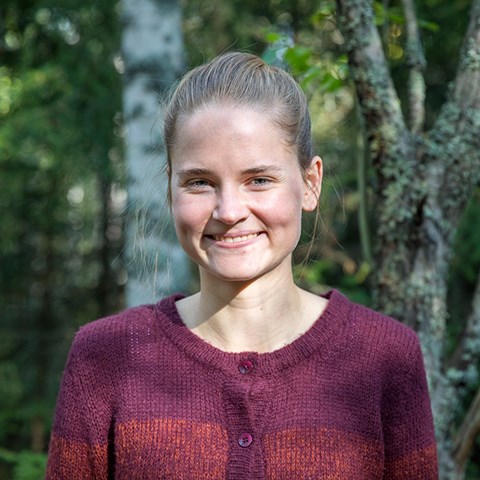How does lichens respond to a particular harvesting method?

Conservationist Maria Michold wanted to collect the data for her Master's thesis herself. She is currently inventoring lichens and then evaluating how different species respond to alternative harvesting methods and restoration measures.
Who am I?
I am Maria Michold and I study Forest Science.
What is your Masters thesis about?
In my Master's thesis I examine if gap cutting with retention of broadleaves has impact on lichens growing on the trees. Gap cutting is a restoration method that can be performed in different ways.
In the forests I study, trees have been felled in circular patches with a radius of 10 m. Aspen and goat willow have been left in the gaps and I study the lichens on those trees.
The aim is to evaluate how different species of lichens react on this type of cutting. Some of them will possibly be favored and some disfavored.
Why did you choose that topic?
I am interested in nature conservation and I wanted to collect the data for my Master's thesis by myself. Lichens work well to inventory now in autumn. I have not studied lichens before so it gives me a lot of new experience. The result of my study will be of great interest for nature conservation.
Contact
Department of Wildlife, Fish and Environmental Studies